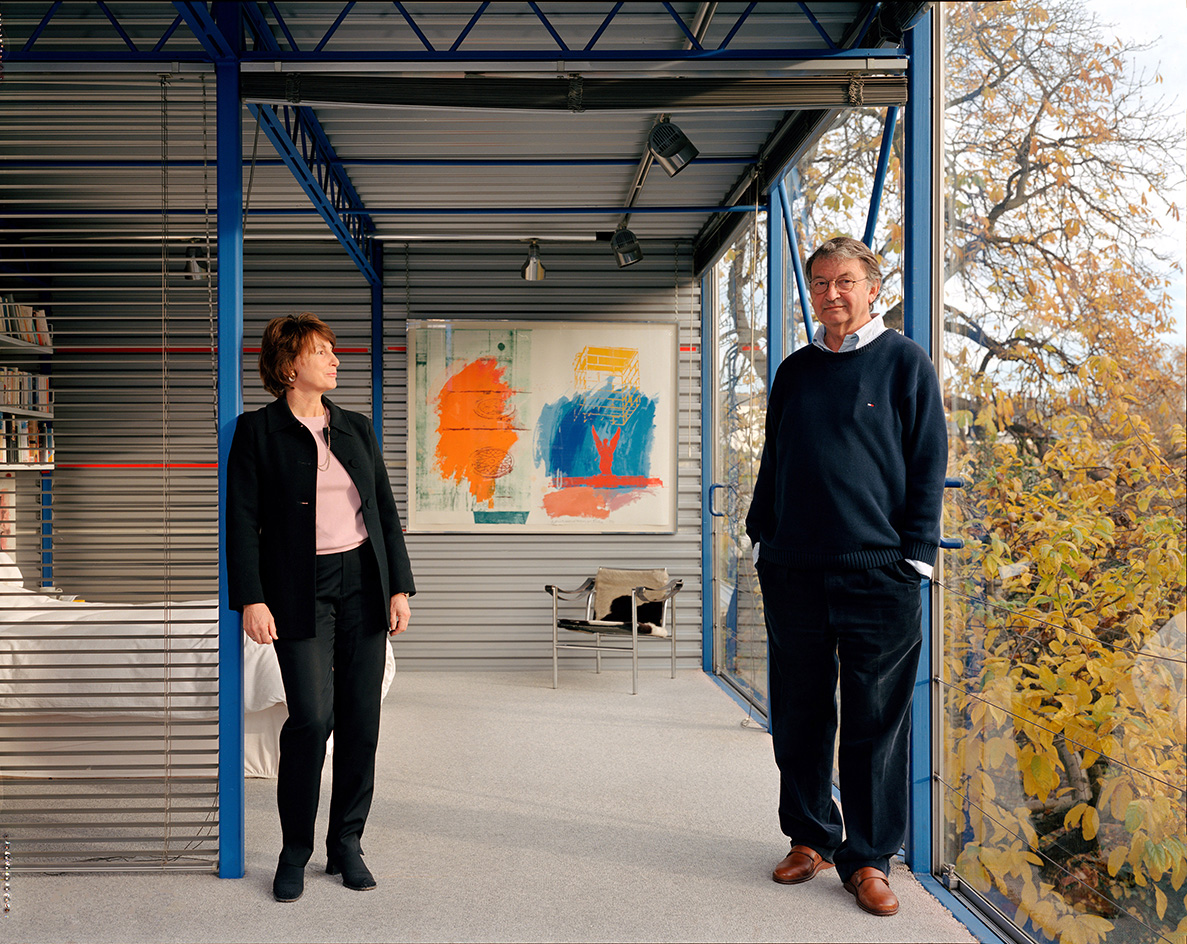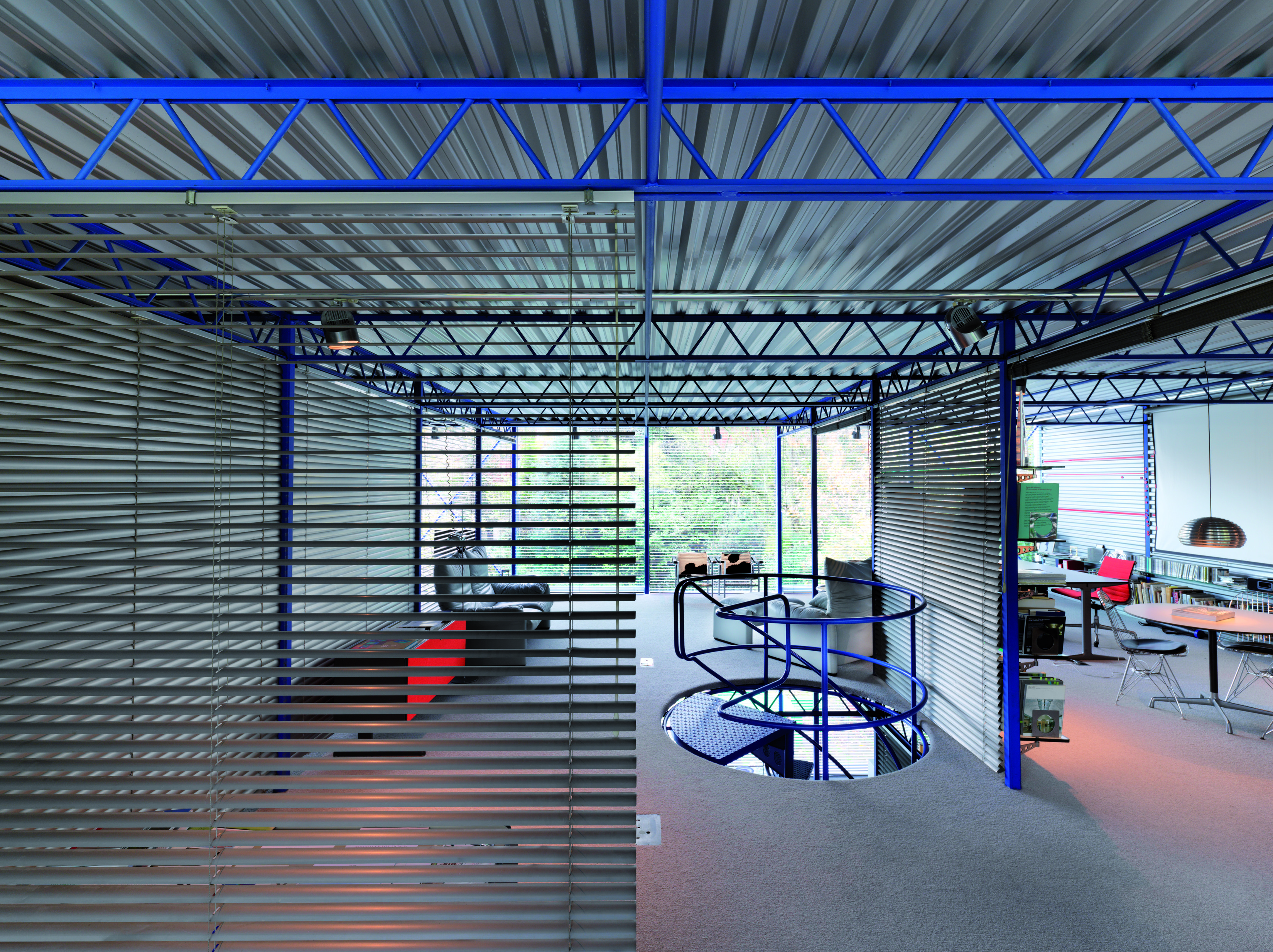In memoriam: architect Sir Michael Hopkins (1935 – 2023)
Sir Michael Hopkins died in London on 17 June 2023; here, we celebrate his long, pioneering career in architecture

Architect Sir Michael Hopkins died 'peacefully on 17 June 2023 at the age of 88, surrounded by his family', it has been announced. The pioneering figure of 20th-century architecture worked in the UK and abroad on era-defining projects that won him many accolades, including the prestigious RIBA Royal Gold Medal in 1994 (the same honour was this year awarded to Yasmeen Lari); a CBE in 1989, followed by a knighthood in1995 for services to architecture; and he was elected a Royal Academician in 1992.

Michael Hopkins: an architectural pioneer
Michael Hopkins founded London studio Hopkins Architects together with his architectural partner and wife Patty Hopkins (the duo share the RIBA Gold Medal recognition) in 1976. Along with several established British architects who set up a practice around the same time (including Richard Rogers, Norman Foster, Nicholas Grimshaw and Terry Farrell), the Hopkinses are widely considered key proponents of and instrumental in developing the High Tech movement that defined much of the 20th century – the pair's own home, Hopkins House, in north London's Hampstead, is an important early example of the genre.
'I first met Michael in the AA refectory – he was a tall, stylish, somewhat enigmatic figure. We worked together and shared a life with a beautiful family for 61 years. Michael was obsessive about architecture and tenacious in refining a design until he was absolutely satisfied with it. He was usually (and annoyingly) right. He made the world - and the buildings so many people live work, and learn in - more beautiful. We will miss him more than we can imagine,' said Patty Hopkins.

Hopkins House
Hopkins House's open plan, boxy shape and utilitarian, almost industrial look are now iconic, and received a Grade II* listing in 2018. The project was completed soon after the couple had founded their practice.
More work soon followed, with seminal examples in the Hopkins portfolio including the Lord's Cricket Ground Mound Stand (1987), Westminster Underground Station (1999), Portcullis House (1999), Kroon Hall in Yale, and the Long House for Living Architecture (2011).

Hopkins House
In a statement, the principals at Hopkins Architects said: 'Michael will be sadly missed by all of us who were lucky enough to have worked with him. He was consistently rigorous in his thinking, brilliant in his analysis and fearlessly creative in his designing. To have worked with him on so many projects was an education like no other and an absolute privilege.
'With Michael the process was always intensely focused and the conversation that led to the buildings always began as a voyage of discovery typically centred on establishing a sense of place, about how to make historic connections, how to put the materials together in an honest and contemporary way so that the building would appear calm and make immediate sense to the end user. Nothing was ever taken for granted. He was greatly respected both as an architect and as a person of integrity and we will all miss him enormously.'
Wallpaper* Newsletter
Receive our daily digest of inspiration, escapism and design stories from around the world direct to your inbox.

Hopkins House

Hopkins House
Ellie Stathaki is the Architecture & Environment Director at Wallpaper*. She trained as an architect at the Aristotle University of Thessaloniki in Greece and studied architectural history at the Bartlett in London. Now an established journalist, she has been a member of the Wallpaper* team since 2006, visiting buildings across the globe and interviewing leading architects such as Tadao Ando and Rem Koolhaas. Ellie has also taken part in judging panels, moderated events, curated shows and contributed in books, such as The Contemporary House (Thames & Hudson, 2018), Glenn Sestig Architecture Diary (2020) and House London (2022).
-
 ‘Independence, community, legacy’: inside a new book documenting the history of cult British streetwear label Aries
‘Independence, community, legacy’: inside a new book documenting the history of cult British streetwear label AriesRizzoli’s ‘Aries Arise Archive’ documents the last ten years of the ‘independent, rebellious’ London-based label. Founder Sofia Prantera tells Wallpaper* the story behind the project
By Jack Moss
-
 Head out to new frontiers in the pocket-sized Project Safari off-road supercar
Head out to new frontiers in the pocket-sized Project Safari off-road supercarProject Safari is the first venture from Get Lost Automotive and represents a radical reworking of the original 1990s-era Lotus Elise
By Jonathan Bell
-
 Kapwani Kiwanga transforms Kvadrat’s Milan showroom with a prismatic textile made from ocean waste
Kapwani Kiwanga transforms Kvadrat’s Milan showroom with a prismatic textile made from ocean wasteThe Canada-born artist draws on iridescence in nature to create a dual-toned textile made from ocean-bound plastic
By Ali Morris
-
 Remembering architect David M Childs (1941-2025) and his New York skyline legacy
Remembering architect David M Childs (1941-2025) and his New York skyline legacyDavid M Childs, a former chairman of architectural powerhouse SOM, has passed away. We celebrate his professional achievements
By Jonathan Bell
-
 Are Derwent London's new lounges the future of workspace?
Are Derwent London's new lounges the future of workspace?Property developer Derwent London’s new lounges – created for tenants of its offices – work harder to promote community and connection for their users
By Emily Wright
-
 A new concrete extension opens up this Stoke Newington house to its garden
A new concrete extension opens up this Stoke Newington house to its gardenArchitects Bindloss Dawes' concrete extension has brought a considered material palette to this elegant Victorian family house
By Jonathan Bell
-
 A former garage is transformed into a compact but multifunctional space
A former garage is transformed into a compact but multifunctional spaceA multifunctional, compact house by Francesco Pierazzi is created through a unique spatial arrangement in the heart of the Surrey countryside
By Jonathan Bell
-
 A 1960s North London townhouse deftly makes the transition to the 21st Century
A 1960s North London townhouse deftly makes the transition to the 21st CenturyThanks to a sensitive redesign by Studio Hagen Hall, this midcentury gem in Hampstead is now a sustainable powerhouse.
By Ellie Stathaki
-
 An architect’s own home offers a refined and leafy retreat from its East London surroundings
An architect’s own home offers a refined and leafy retreat from its East London surroundingsStudioshaw has completed a courtyard house in amongst a cluster of traditional terraced houses, harnessing the sun and plenty of greenery to bolster privacy and warmth
By Jonathan Bell
-
 The museum of the future: how architects are redefining cultural landmarks
The museum of the future: how architects are redefining cultural landmarksWhat does the museum of the future look like? As art evolves, so do the spaces that house it – pushing architects to rethink form and function
By Katherine McGrath
-
 Remembering architect Ricardo Scofidio (1935 – 2025)
Remembering architect Ricardo Scofidio (1935 – 2025)Ricardo Scofidio, seminal architect and co-founder of Diller Scofidio + Renfro, has died, aged 89; we honour his passing and celebrate his life
By Ellie Stathaki